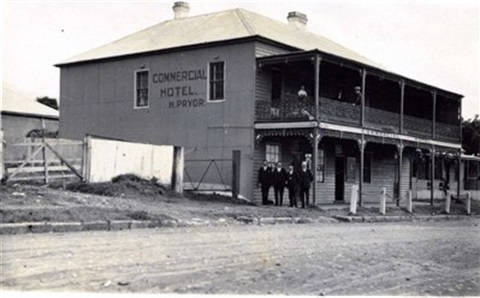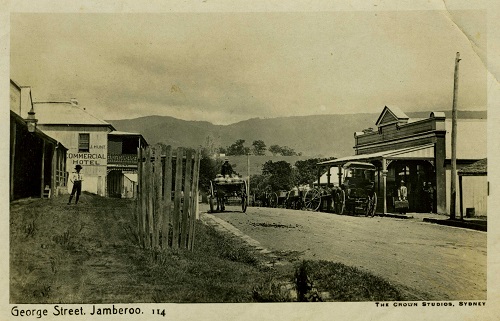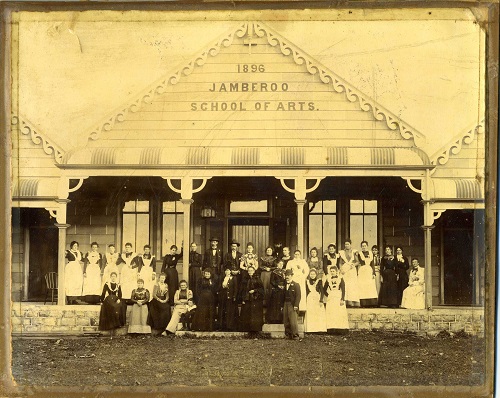Early history of Jamberoo

The cedar-getters were the first Europeans in the Jamberoo Valley, coming in as early as 1810, but it wasn’t until the land grants given out by Governors from the early 1820s, that the Jamberoo Valley developed beyond rough and ready loggers camps.
Jamberoo was the first thriving town in our Municipality as it was on the main rail route from Sydney to Nowra and from the Southern Highlands to the south coast. Although there were other settlers here, prior to Michael Hyam, his large land grant (he named it Sarah’s Valley) created the beginning of the village that became the present day Jamberoo. By the 1830s, Jamberoo was a bustling village with stores in abundance. Hyam built a public house (The Harp Inn), stores, blacksmith shop, tannery and boot makers, and a race course. Hyam sold his property in 1846 to Robert Owen, who ultimately divided the estate into lots of 10-40 acres.
In 1838, the Woodstock Mills were built on the bank of the Minnamurra River, 100 metres west of the Jamberoo/Albion Park Road, creating another village. Woodstock Village became a busy community with a flour and saw mill, a brewery and two hotels, piggery, cooperage and bacon factory, and over 80 residents. The mills had a series of financial problems and were ultimately demolished in 1873, leaving no trace of Woodstock mills or village today. Jamberoo was incorporated as a Local Government Unit in August 1859 (the same year as Kiama), but was amalgamated into the Kiama Municipality in 1954.
The early landholders and residents of this community were very industrious. An Ice factory was build on the slopes of Saddleback Mountain in 1850s, the Robb family (Riversdale) started a vineyard and tried growing sugarcane, John Colley (Longbrush) grew sugar cane and sorghum, Edwin Vidler (Curramore) grew hops and made bricks, the Boyles had a sandstone quarry, and coal was mined on Samuel Vidler’s property at Stockyard Mountain and other locations. Corn was grown on many landholdings for stock feed and to be ground into flour. However, by the 1870s, local famers realised dairying was the best use of the cleared land.
There were four butter factories in the Jamberoo Valley in the late 1800s, but before they were established the farming family had the arduous task of making the butter by hand. The dairy farm of the early 1800s was particularly demanding on the farming family. All the family would assist with the early morning and afternoon milking as well as feeding calves and other livestock, growing animal feed, tending to the vegetable garden and orchard, making bread, jams, butter and the usual farm maintenance of fencing, weeding and clearing the land in the first place. After long and busy days on the farm, there probably wasn’t a lot of energy left for entertainment but the Jamberoo valley residents had regular corn-husking parties, church gatherings, picnics and race meetings.
After being a central transport location for many years, the railway extension to Kiama in 1888 and the bridge over the Minnamurra River meant Jamberoo was finally bypassed.
George St (now Allowrie St), Jamberoo.

Jamberoo School of Arts building and group of people out the front. Possibly a Church of England Flower Show.

Lady in horse drawn buggy, Jamberoo c.1912.
